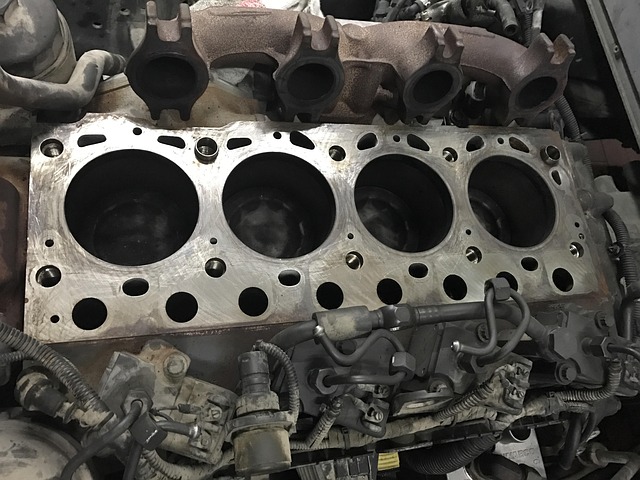Learn how to navigate the process of car registration in California with ease. This comprehensive guide breaks down every step, from understanding the essential requirements for registration to securing your vehicle’s title through DMV VIN verification. Discover what documents you need, prepare your vehicle for inspection, and visit a local DMV office for a seamless registration experience. We’ll also cover post-registration tasks like insurance, license plates, and annual renewals.
- Understand the Requirements for Car Registration in California
- Gather Necessary Documents for DMV Vin Verification
- Prepare Your Vehicle for Inspection and Registration
- Visit a California DMV Office for Registration and Title Transfer
- Post-Registration Steps: Insurance, License Plates, and Annual Renewals
Understand the Requirements for Car Registration in California

Before registering your car in California, it’s crucial to understand the specific requirements set by the Department of Motor Vehicles (DMV). One essential step is ensuring your vehicle meets safety and environmental standards through an inspection process known as DMV VIN verification. This involves verifying the Vehicle Identification Number (VIN) to confirm that the car matches the information on record and has not been reported stolen or had its identity altered.
Additionally, you’ll need to provide proof of insurance and complete necessary paperwork, such as applying for a registration certificate and license plate. The process can be streamlined with services like mobile VIN verification or a mobile VIN inspection, allowing you to initiate the verification electronically before visiting a DMV office. These modern solutions ensure convenience while adhering to California’s car registration regulations.
Gather Necessary Documents for DMV Vin Verification

Before heading to the California Department of Motor Vehicles (DMV), ensure you have all the required documents for a successful dmv vin verification. This process is crucial for registering your vehicle, as it confirms the vehicle’s identity and history. Gather your car’s registration certificate from its previous state, along with the title if applicable. Additionally, bring along any existing insurance documents and proof of ownership, such as a bill of sale.
For a more convenient vin inspection, consider using a mobile vin verifier. These services allow you to complete the verification process remotely by providing your vehicle’s unique identification number (VIN). This option is beneficial if you’re time-constrained or prefer not to visit the DMV in person. Ensure that all documents are up to date and accurate to streamline the registration process.
Prepare Your Vehicle for Inspection and Registration

Before heading to the California Department of Motor Vehicles (DMV) for registration, ensure your vehicle is in good condition and ready for inspection. This involves a thorough check-up to verify that all components meet safety standards. One crucial step is to obtain a Vehicle Identification Number (VIN) verification report using a reliable mobile vin verifier. This process ensures the DMV can cross-reference your vehicle’s details, making the registration smoother.
During this preparation, pay special attention to key areas like lights, brakes, tires, and emissions systems. A well-maintained vehicle will pass the inspection more readily. Additionally, having a mobile vin verification done beforehand can save time at the DMV as it provides all the necessary information for a quick and accurate registration process.
Visit a California DMV Office for Registration and Title Transfer

To register your car in California, one of the essential steps is to visit a DMV office for both registration and title transfer. This process ensures that all legal requirements are met, including the crucial dmv vin verification. During this visit, you’ll need to present your vehicle’s unique identification number (VIN) for inspection. A mobile VIN inspection or using a mobile VIN verifier can be convenient options, as they allow you to complete this step without having to physically visit a DMV location.
Once your VIN has been verified, the DMV staff will guide you through the registration process, which includes filling out necessary forms and providing proof of insurance and identity. They’ll also issue you with a vehicle registration certificate, a crucial document for legal and safety reasons. Always ensure that all information is accurate to avoid any future issues during subsequent renewals or transfers.
Post-Registration Steps: Insurance, License Plates, and Annual Renewals

After successfully registering your vehicle with the California DMV, there are several crucial steps to ensure your car is legally compliant and properly insured. One of the primary post-registration tasks is obtaining auto insurance. California law requires all vehicles to be insured against liability, and you’ll need to present proof of this coverage during stoppings by law enforcement officers. You can choose from various insurance providers, and many offer competitive rates for new or pre-owned cars.
Additionally, you must display proper license plates on your vehicle. These plates are issued by the DMV after registration and should be attached to both sides of your car. Regularly check your plate placement, as incorrect or missing plates can result in fines. Lastly, remember that California vehicles require annual registration renewals. You’ll receive reminders from the DMV, but it’s a good idea to mark your calendar for this renewal date, especially if you’ve opted for digital notifications using services like a mobile vin verifier (or mobile VIN verification). Ensuring timely renewal avoids penalties and keeps your vehicle legally registered.
Registering a car in California involves understanding key requirements, gathering essential documents for DMV VIN verification, preparing your vehicle for inspection, visiting a local DMV office, and completing post-registration steps like insurance, license plates, and annual renewals. By following these straightforward steps and adhering to the necessary procedures, you’ll efficiently navigate the process, ensuring your vehicle is legally registered and ready to hit the California roads.
